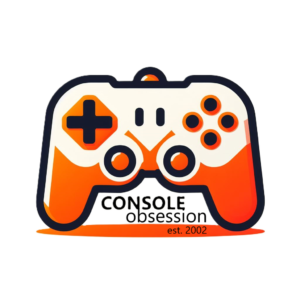Metal Slug 7 DS Review
There is a certain amount of nostalgia that Metal Slug 7 carries with it, from its earliest appearances on Neo Geo hardware to the recent Anthology (the PS2 and Wii versions received a healthy 8/10 from Console Obsession). But can this new portable iteration bring its hardcore gameplay to the widespread DS audience successfully?
For those unaware of the series – and I doubt there are many reading this who do not at least know the name – the core of Metal Slug is run & gun action over a series of scrolling levels. The “Slugs” of the title are vehicles that the player can access during the game, heavily armed but with their use limited by a fuel gauge. MS7 introduces three new Slugs, including the giant mech known as Gigant.
Presentation of the game is relatively straightforward, from the sparse main menu to the simple options. Most of the time will be spent in Main Mission mode, with three different difficulty levels – Beginner, Normal and Hard. The Combat School offers short, sharp missions played out on the various levels of the main game, offering the chance of improving your rank and finally impressing the Instructor. This mode is ideal for gaming on the move, and has some innovative ideas such as juggling beach balls with your bullets. Finally, you can see the POW List, giving you the names of the prisoners you have rescued during the game (and also revealing one of the franchise’s major flaws, but more on that later.)
The player can choose one of six characters, familiar from previous games and each with slightly different skills. They are armed with a basic weapon (pistol, or heavy machine gun on Beginner level) and limited supplies of a secondary weapon (these start out as grenades, but others can be collected). Jumping around the platforms, enemies and weapons are destroyed with sustained attacks or knifed if they get too close. Large quantities of bullets head for the player, making progress tricky. Through the various sections of the game, POWs (prisoners) appear, tied up and looking for help. Once the player releases them, they drop either bonus objects or extra weapons that come in handy. One addition to the gameplay is the new score multiplier, or Rush Blaster Meter as the game calls it. Shooting enemies quickly increases this up to a maximum of x16 before it drops back. The ability to carry and swap between two different weapons is here, allowing some tactics in saving the better weapons.
The look and feel of the franchise is well maintained on the DS, despite the small size of the sprites. The art style will be very familiar to the fans, with nice military-themed backgrounds and cartoon enemies reacting in horror and falling to the ground in amusing ways. There is little slowdown compared to other games in the series, but at times it is obvious that the sprites have been scaled down, with the odd stray pixel that purists would notice. Sound works well, with the familiar tunes and jingles plus some strong effects.
There has been little effort to make use of the DS’s features like the touchscreen, but in many ways it is better for the designers to have ignored them. The action takes place on the top screen with a map (that can be moved by stylus) on the touchscreen, but other than highlighting nearby POWs it serves little real purpose in the heat of battle. The lack of WiFi options (even something as simple as connecting to a high-score server) is a more serious omission.
The gameplay is as tough and demanding as ever, spread over seven levels divided into short sections and boss battles. While many ideas and locations have been recycled from earlier games, it does feel like a cohesive game and reaching the credits will be a very tough challenge for most gamers. There are some flaws, inherited from earlier games. The worst is the way POWs are counted – if you die, you lose any that you have collected so far. Only making it through all sections of a level without dying will finally “rescue” the POWs to be added to your list. A bigger design flaw is the dropping of large blocks of debris on the player in certain sections; until their location is learnt, they are almost impossible to avoid and are a harsh penalty. Sadly, one of the bright spots – the fun of smashing through enemies with the Gigant mech – is confined to just a very brief sub-level (and an appearance in a couple of the Combat School missions). The action does get repetitive by the last level, particularly as the game will only take around an hour to get through if the player can conserve their limited number of continues (just two on the Hard difficulty level).
Metal Slug fans will no doubt want this latest portable instalment for their collection, but those short on patience should steer clear.
7/10







